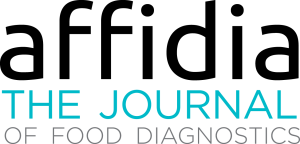ANSES identifies mutagenic and carcinogenic mycotoxins using advanced software applications
A team of researchers from the French Agency for Food, Environmental and Occupational Health & Safety (ANSES) has recently published a groundbreaking study that identifies mycotoxins that may be mutagenic and/or carcinogenic using a combination of various software applications.
Mycotoxins are naturally occurring toxins produced by certain moulds (fungi) which can grow during any stage of food production, particularly in plant-based foods like cereals, fruits, and vegetables. Some mycotoxins can cause genetic mutations or cancer in humans and animals, therefore, the European regulations have strict limits on the main mycotoxins allowed in food products, but there is limited data on other mycotoxins.
To identify mutagenic or carcinogenic mycotoxins, the researchers used computer modeling and quantitative structure-activity relationship (QSAR) software. This innovative approach predicts the effects of compounds on living organisms based on their structure and allows for initial characterization of mycotoxins without the need for animal testing.
Using the most effective software combinations, the team analyzed 904 mycotoxins and mycotoxin metabolites from their custom database. They identified 127 mycotoxins with mutagenic potential and 548 that may be carcinogenic. Ninety-five of these mycotoxins appear to be both mutagenic and carcinogenic, potentially posing a health risk even in small quantities.
Denis Habauzit, project manager at ANSES, cautions that the software is still under development, so errors could occur. However, the research has highlighted specific compounds that warrant further toxicology studies.
The researchers also stress the need to examine the actual quantities of these compounds found in food and feed to determine the real risks they pose. Currently, this information is only available for certain mycotoxins through Total Diet Studies (TDSs) conducted by ANSES.
This study represents the most comprehensive research to date on mycotoxins using QSAR software and emphasizes the importance of these tools in prioritizing the assessment of harmful toxins. The findings are particularly relevant as climate change and restrictions on fungicide use could increase mold growth and contamination of foodstuffs by emerging mycotoxins.
Source:






















